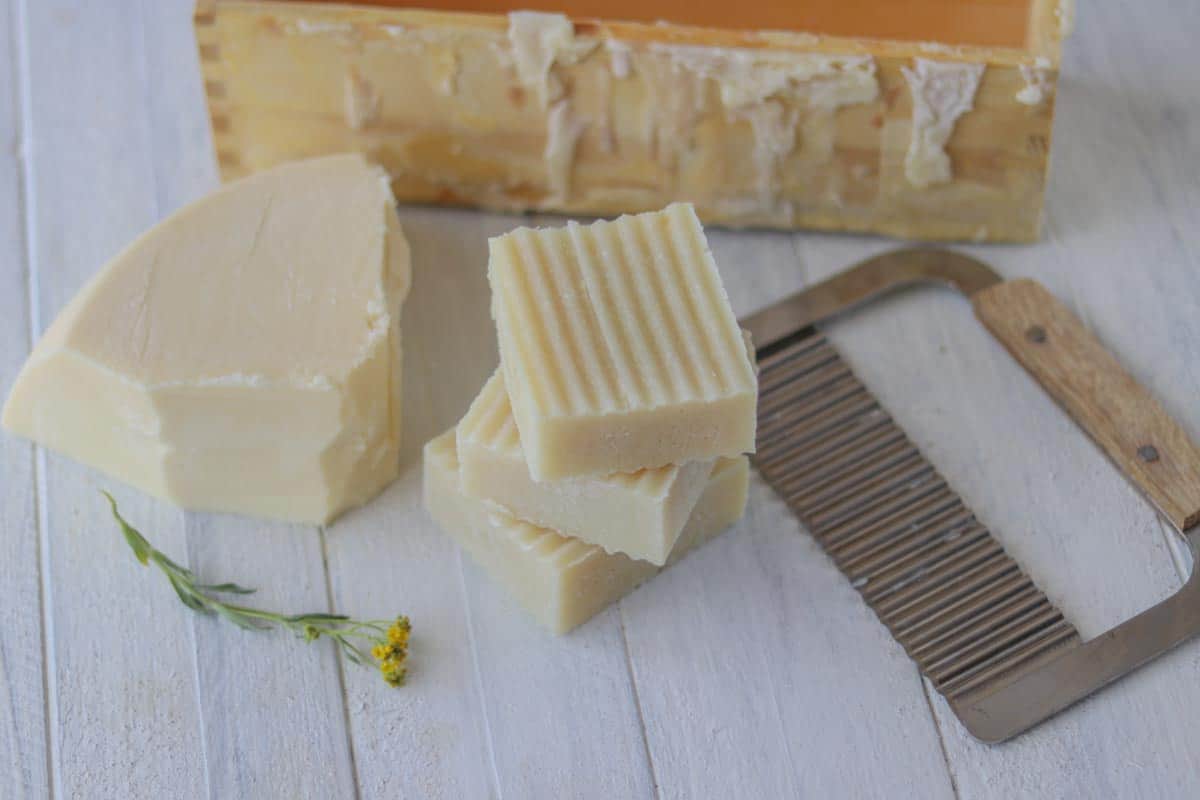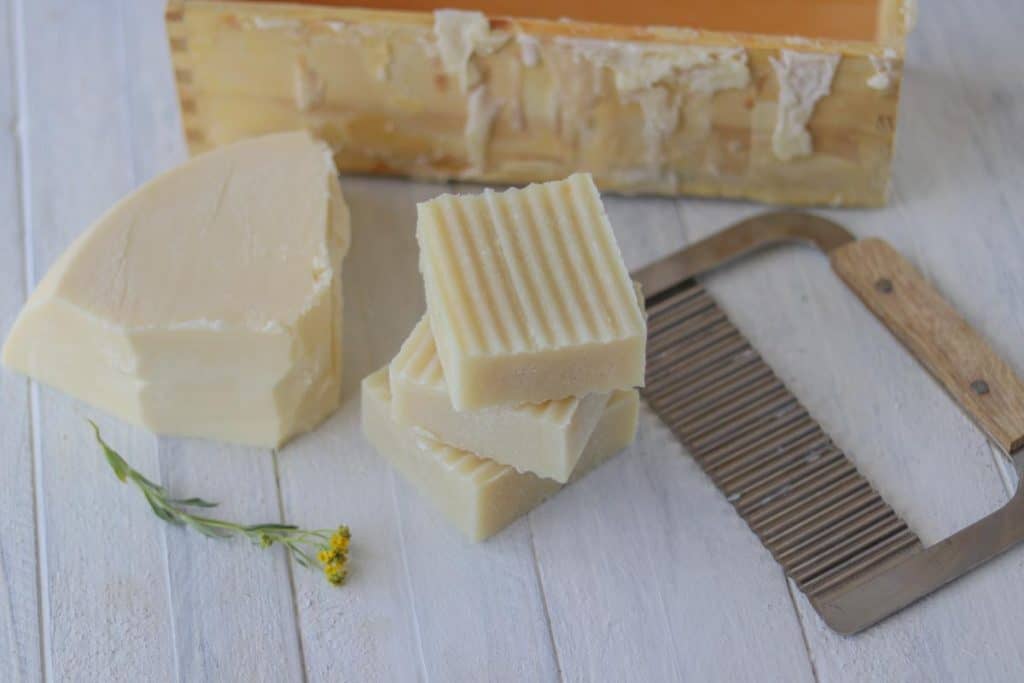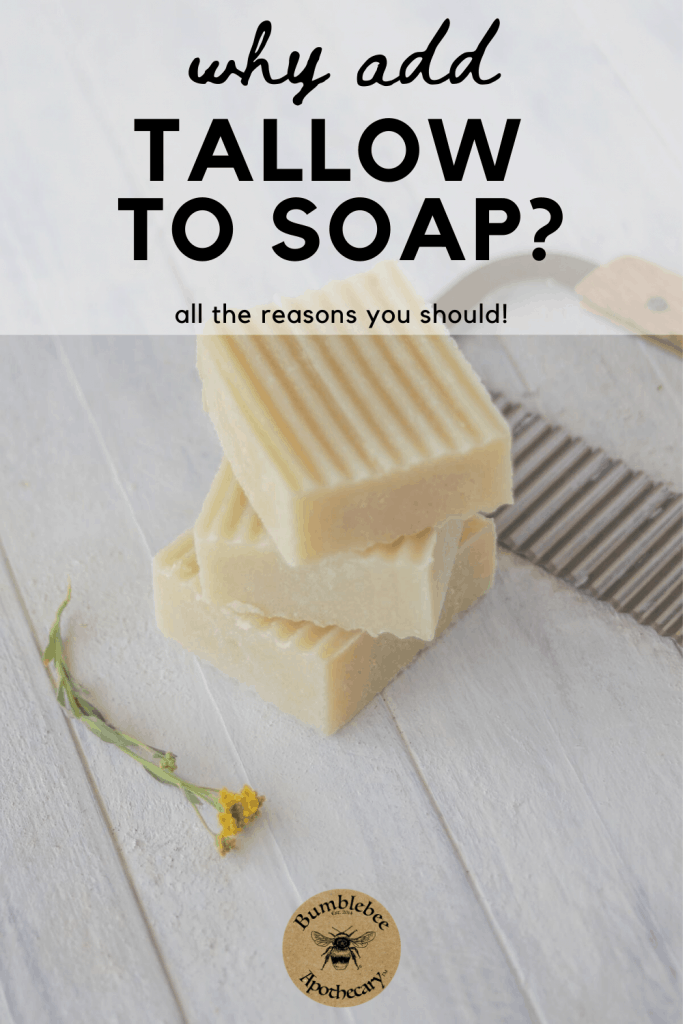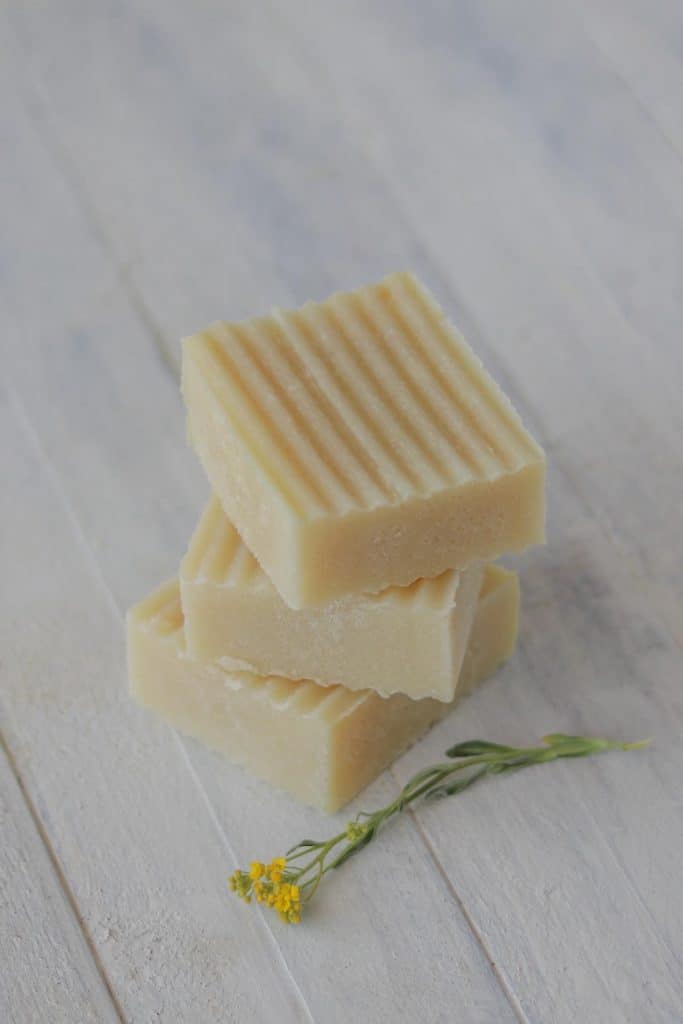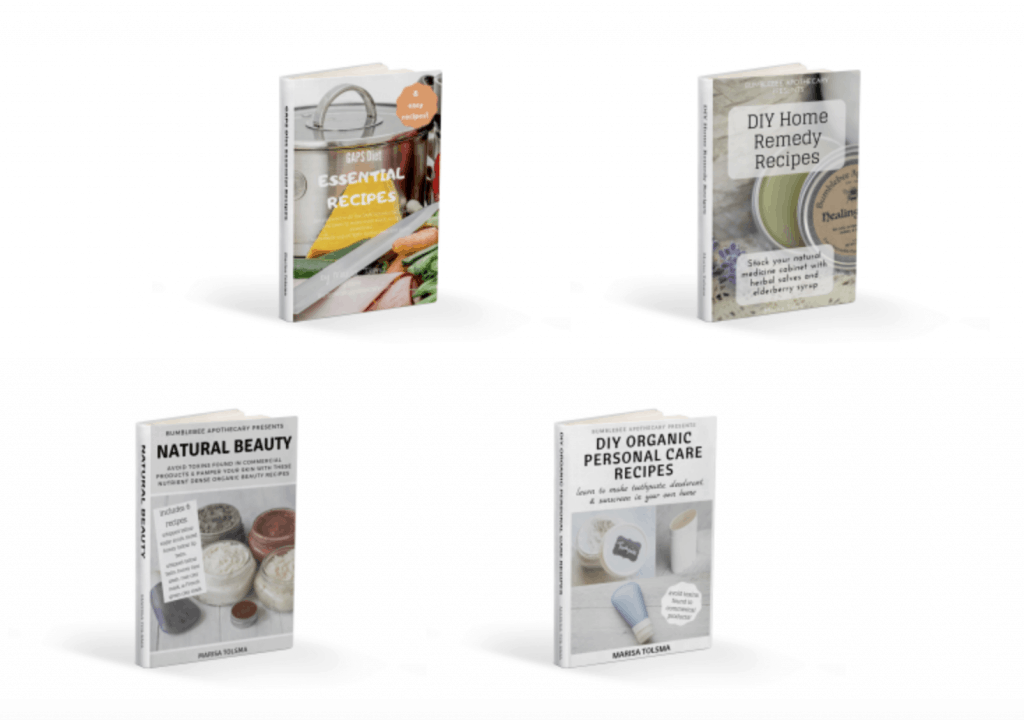Why add tallow to soap? There are some very good reasons! Let’s take a look at why adding tallow to your soap recipe is a great idea.
Why do I like to add tallow to soap?
Why add tallow to soap? I am a huge fan of grass fed tallow, because of all the wonderful nutrients it contains and the many things you can make with it. One of my favorite things to make with tallow is soap.
I used to make only plant based soaps and shampoo bars, but I just wasn’t happy with the results. The bars were soft and melted away quickly when wet. And no plant oil can moisturize skin like tallow can.
After being totally impressed with tallow balm, I decided to try designing my soap recipes to include tallow. I’m so glad I did!
Here is my recipe for how to make tallow soap that also contains some other oils, and my pure tallow soap recipe. Another great recipe that uses tallow is my tallow shampoo bar recipe.
Pin it for later
This post contains affiliate links, which means I make a small commission at no extra cost to you. Get my full disclosure here.
What you should know about tallow for soap making
Tallow adds some wonderful properties to soap, whether you use the cold process or hot process to make it.
Here are some things that tallow provides in soap making:
- The palmitic and stearic acid in tallow help to make a hard, long lasting soap bar that doesn’t melt away quickly when wet. I was so impressed by the results!
- Tallow helps to produce rich, creamy lather that is gently cleansing and wonderful for skin. Pure tallow soap is very popular for people who have various skin conditions, because it is so gentle and effective at the same time.
- Other more cleansing oils, like coconut oil and olive oil go very nicely in a soap bar along with tallow, as the different properties complement each other well.
- The superfat amount in a finished soap bar means that some unconverted tallow stays on the skin. This is great, because tallow is the most amazing skin moisturizer, soother, and healer of all time. I talk about this more in this post, where I explain the reasons why skin loves grass fed tallow, and in this post where I share the complete guide to tallow skin care.
- Tallow is easy to work with in soap making, as it reaches trace quickly. Soap bars made with tallow are also ready to slice in a short time.
- Soap recipes that include tallow are perfect for when you want to use fancy techniques, like coloring, piping, and decorating, because of the quick hardening time.
More reasons to add tallow to soap
Another popular ingredient that can help produce hard bars is palm oil. Tallow is a much better choice, because of how sustainable tallow is.
Palm oil isn’t as sustainable as a choice, because so much work goes into growing, harvesting, processing, and transporting it. There are also concerns about palm oil production not being environmentally friendly.
Tallow is always produced on a continual basis, since it is a byproduct of beef. It can be produced locally, and made right at home. Tallow is also a very inexpensive soap making ingredient.
If you’re concerned about a smell from tallow in soap making, don’t be! If you render tallow properly and gently, you can get it to where there is pretty much no smell at all.
I have also found that even if I make soap with tallow that does have more of a beefy smell, that smell doesn’t come through in the finished bars of soap. Essential oils work very nicely in tallow soap to add a lovely scent, too.
What are the benefits of tallow?
Beef tallow, especially when it comes from 100% grass fed beef, is rich in so many beneficial nutrients. It provides skin exactly what it needs to repair itself.
Here are some of the benefits of 100% grass fed tallow:
- Is deeply nourishing and moisturizing
- Contains Vitamins A, D, K, & E, & B12, all of which are extremely beneficial for skin
- Also helps to prevent skin’s loss of moisture
- Contains conjugated Linoleic Acid (CLA) with natural anti-inflammatory properties
- Has all of these nutrients that are found together only in animal products
- Contains oleic acid (omega 9) aids other components in penetrating deeply into skin
- Is antibacterial & antimicrobial
- Contains palmitic acid which helps improve the protective barrier function of skin
- Is rich in minerals
- Contains stearic acid which helps to repair damaged skin, and improves skin’s flexibility and suppleness
- Aids in skin regeneration for skin that appears healthier and more youthful
- Contains palmitoleic acid (omega 7) which is one of our skin’s basic building blocks (source)
As you can see, it’s a pretty impressive list! That is why 100% grass fed tallow is my all time favorite fat for skincare, hair care, soap making, cooking, and more!
Pure tallow soap recipe
Ingredients:
- 32 oz. tallow
- 4.2 oz. lye
- 12.16 oz. water
- 1.5 fl. oz. essential oils (optional)
Instructions:
- Weigh tallow and put into a crockpot. I find it is easiest to melt the tallow before weighing. If tallow is below 100 degrees F, turn the crockpot on low to gently heat the tallow.
- Weigh the water in a heat safe container or sturdy plastic bucket, and weigh lye separately.
- Check the temperature of the tallow. You want it to be 100 degrees F. Let tallow cool if necessary.
- Once tallow is 100 degrees F, take the lye and water outdoors. Wearing gloves and safety goggles, carefully and slowly pour the lye into the water. Stir gently.
- Once the lye water has turned from cloudy to clear, leave it to cool for 10 minutes.
- Carefully pour the lye water into the tallow.
- Use an immersion blender to mix the soap. After a few minutes, it will grow creamy, and start to thicken. Mix until it has reached “trace,” the light pudding consistency.
- Add the essential oils (if using) and blend again to incorporate.
- Pour soap into molds, top with wax paper, and wrap molds in towels.
- After 24 hours, remove soap from mold and slice into bars. Let cure in an area with good air flow for 4 weeks.
Tallow, olive oil, and coconut oil soap recipe
Ingredients:
- 24 oz. tallow
- 8 oz. refined coconut oil
- 8 oz. olive oil
- 15.2 oz. water
- 5.49 oz. lye
- 1.75 fl. oz. essential oil
Directions:
- Weigh tallow, coconut oil, and olive oil, and put into a crockpot on high, or a pot on the stove on low heat.
- Weigh the water in a heat safe container or sturdy plastic bucket, and weigh lye separately.
- Once oils are melted, check the temperature. You want the oils to be 100 degrees F. Let oils cool if necessary.
- Once oils are at 100 degrees F, take the lye and water outdoors. Wearing gloves and safety goggles, carefully and slowly pour the lye into the water. Stir gently.
- Once the lye water has turned from cloudy to clear, leave it to cool for 10 minutes.
- Carefully pour the lye water into the oil mixture.
- Use an immersion blender to mix the soap. After a few minutes, it will grow creamy, and start to thicken. Mix until it has reached “trace,” the light pudding consistency.
- Add the essential oils and blend again to incorporate.
- Pour soap into molds, top with wax paper, and wrap molds in towels.
- After 24 hours, remove soap from mold and slice into bars. Let cure in an area with good air flow for 4 weeks.
Soap making basics and safety
If you’re brand new to soap making, my blog post on soap making basics and safety will help get you started. It’s a pretty simple process and tons of fun, but there are a few things to know before you get started.
You do have to use lye when you make soap. That’s because lye provides the chemical reaction to convert oils (like tallow) into soap. Otherwise you’d be trying to wash with oil or fat, which doesn’t work so well. 🙂
You don’t have to be afraid of lye, you just need to know how to handle it properly. Check out my post on getting started with soap making, and you’ll do great.
More tallow recipes
Have you tried tallow in soap making?
What recipe did you use? How did you like it? Let me know in the comments!
Join our traditional wisdom community, and get exclusive access to my online resource library, where every freebie I’ve made is in one spot!
Shop this post
Organic, 100% grass fed tallow
Wand to pick up a handmade tallow soap or shampoo bar?
Check out the Bumblebee Apothecary Shop here.
Want to grab some labels for your homemade tallow soap and other DIY skincare products?
I’ve done all the hard work for you with this set of 30 printable skincare product labels. All the recipes are included on the back labels, too! Get your set of printable skincare product labels here.
Follow along with Bumblebee Apothecary
Thanks for stopping by! Be well! 🐝

